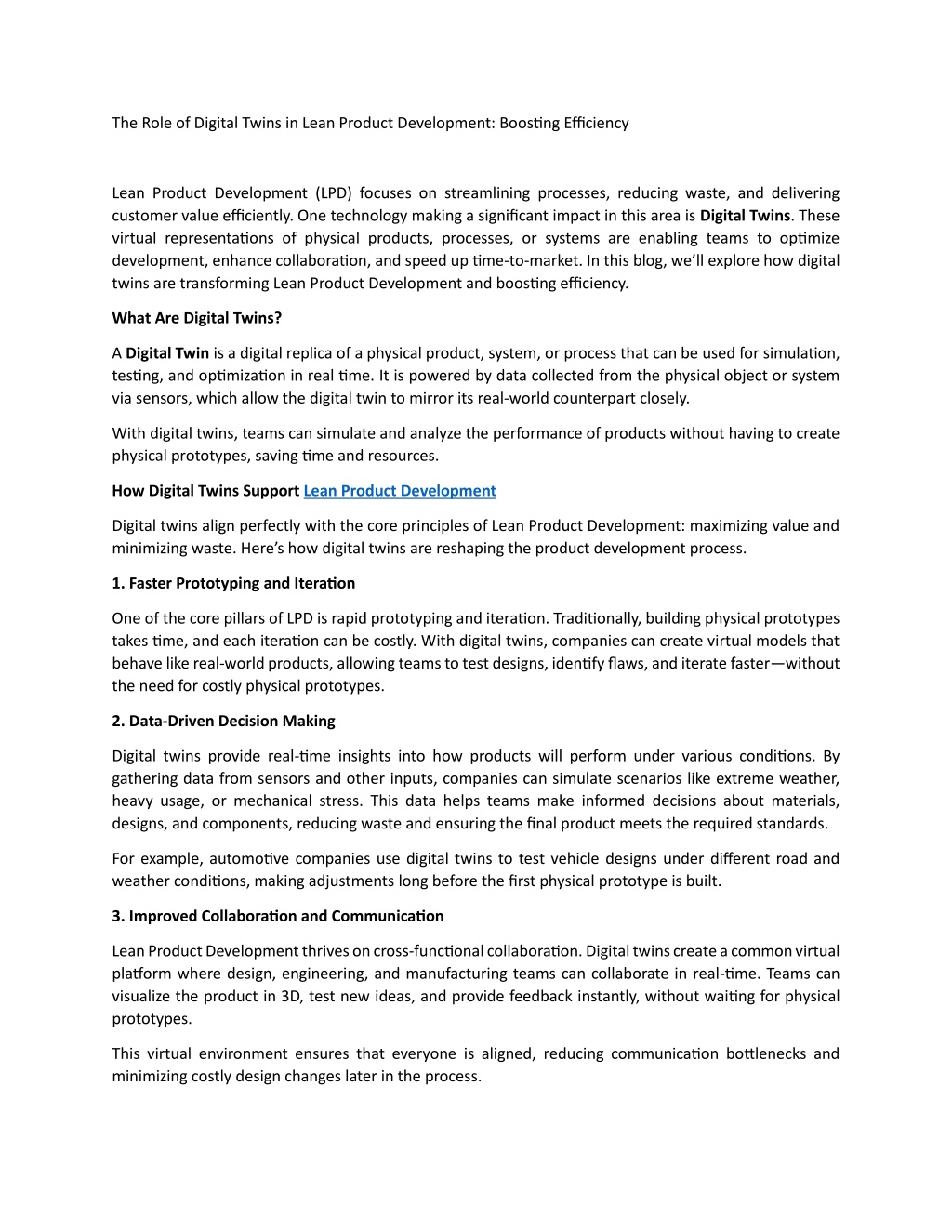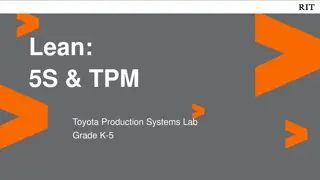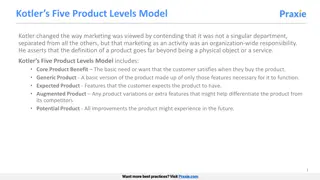
The Role of Digital Twins in Lean Product Development Boosting Efficiency
Lean Product Development (LPD) focuses on streamlining processes, reducing waste, and delivering customer value efficiently. One technology making a significant impact in this area is Digital Twins.
Download Presentation

Please find below an Image/Link to download the presentation.
The content on the website is provided AS IS for your information and personal use only. It may not be sold, licensed, or shared on other websites without obtaining consent from the author. Download presentation by click this link. If you encounter any issues during the download, it is possible that the publisher has removed the file from their server.
E N D
Presentation Transcript
The Role of Digital Twins in Lean Product Development: Boosting Efficiency Lean Product Development (LPD) focuses on streamlining processes, reducing waste, and delivering customer value efficiently. One technology making a significant impact in this area is Digital Twins. These virtual representations of physical products, processes, or systems are enabling teams to optimize development, enhance collaboration, and speed up time-to-market. In this blog, we ll explore how digital twins are transforming Lean Product Development and boosting efficiency. What Are Digital Twins? A Digital Twin is a digital replica of a physical product, system, or process that can be used for simulation, testing, and optimization in real time. It is powered by data collected from the physical object or system via sensors, which allow the digital twin to mirror its real-world counterpart closely. With digital twins, teams can simulate and analyze the performance of products without having to create physical prototypes, saving time and resources. How Digital Twins Support Lean Product Development Digital twins align perfectly with the core principles of Lean Product Development: maximizing value and minimizing waste. Here s how digital twins are reshaping the product development process. 1. Faster Prototyping and Iteration One of the core pillars of LPD is rapid prototyping and iteration. Traditionally, building physical prototypes takes time, and each iteration can be costly. With digital twins, companies can create virtual models that behave like real-world products, allowing teams to test designs, identify flaws, and iterate faster without the need for costly physical prototypes. 2. Data-Driven Decision Making Digital twins provide real-time insights into how products will perform under various conditions. By gathering data from sensors and other inputs, companies can simulate scenarios like extreme weather, heavy usage, or mechanical stress. This data helps teams make informed decisions about materials, designs, and components, reducing waste and ensuring the final product meets the required standards. For example, automotive companies use digital twins to test vehicle designs under different road and weather conditions, making adjustments long before the first physical prototype is built. 3. Improved Collaboration and Communication Lean Product Development thrives on cross-functional collaboration. Digital twins create a common virtual platform where design, engineering, and manufacturing teams can collaborate in real-time. Teams can visualize the product in 3D, test new ideas, and provide feedback instantly, without waiting for physical prototypes. This virtual environment ensures that everyone is aligned, reducing communication bottlenecks and minimizing costly design changes later in the process.
4. Optimizing the Product Lifecycle Digital twins aren t just useful in the development stage; they can be used throughout the entire product lifecycle. During production, digital twins allow teams to monitor the performance of equipment, optimize workflows, and predict maintenance needs. This minimizes downtime and ensures more efficient manufacturing. Even after the product has been launched, digital twins continue to provide valuable insights by tracking real-world performance, allowing companies to optimize future versions of the product. 5. Reducing Time-to-Market Speed is essential in today s competitive market, and digital twins are key to accelerating time-to-market. By allowing teams to simulate, test, and validate product designs virtually, digital twins significantly reduce development time. With faster iterations, fewer physical prototypes, and reduced design errors, companies can bring products to market much faster than with traditional methods. Challenges of Implementing Digital Twins While digital twins offer significant benefits, they also come with challenges: Data Management: Digital twins require vast amounts of data to be effective. Managing, analyzing, and storing this data can be complex. Initial Investment: Setting up a digital twin system involves upfront costs for sensors, software, and integration into existing workflows. Skilled Workforce: Implementing digital twins requires skilled personnel who can manage the technology and make sense of the data generated. Conclusion Digital twins are revolutionizing Lean Product Development by allowing teams to create virtual prototypes, test ideas in real-time, and collaborate more effectively. They empower data-driven decisions, reduce development costs, and help bring products to market faster. While there are challenges, the benefits of implementing digital twins far outweigh the drawbacks, making them an essential tool for modern companies aiming to boost efficiency in product development. Embracing digital twins in LPD is a critical step toward staying competitive and ensuring long-term innovation success. Read lean.html More : https://techhorizonsolutions.blogspot.com/2024/09/the-role-of-digital-twins-in-
















































